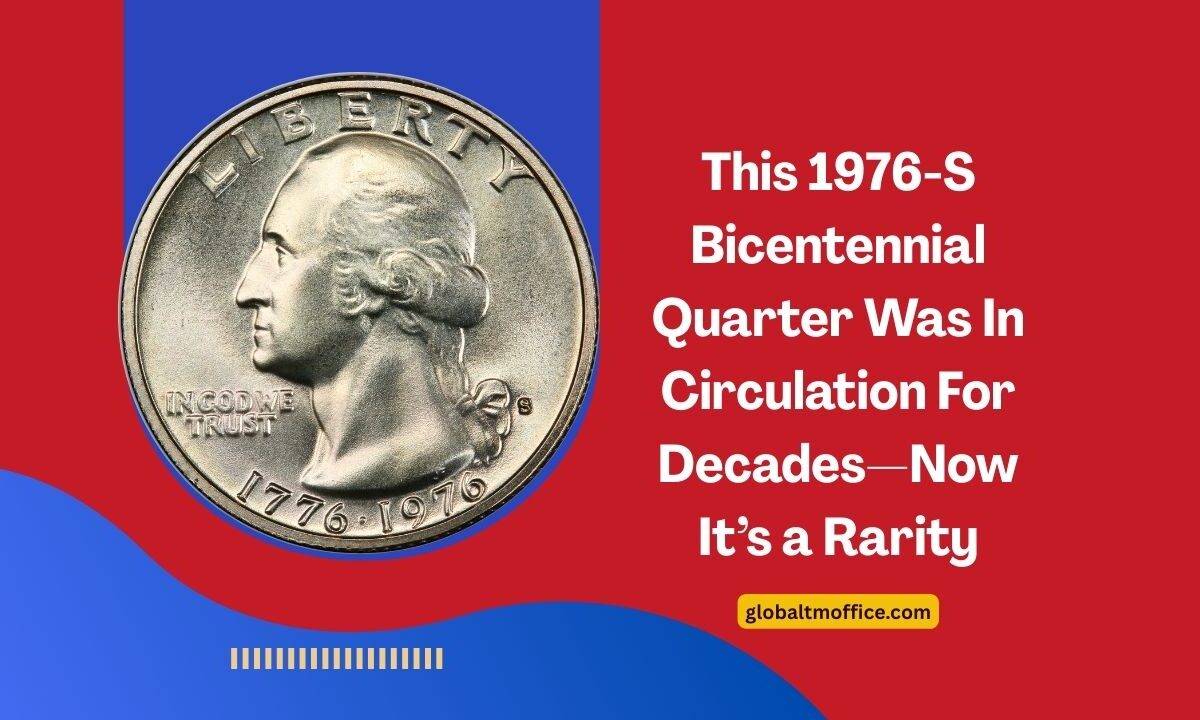The 1976-S Bicentennial Quarter was minted to commemorate the 200th anniversary of American independence.
Initially produced in large quantities for circulation, this coin has transitioned into a sought-after rarity among collectors due to its unique features and historical significance.
Origins and Design
In 1976, the U.S. Mint released special coinage to celebrate the nation’s bicentennial. The quarter featured a dual date of 1776–1976 and a distinctive reverse design.
Artist Jack L. Ahr designed the reverse, showcasing a colonial drummer boy with a torch encircled by 13 stars, symbolizing the original colonies.
This design was selected through a national competition aimed at capturing the spirit of the American Revolution.
Composition and Minting Details
The 1976-S Bicentennial Quarter was minted at the San Francisco Mint and came in two primary versions:
- Clad Proof: Made from a copper-nickel composition.
- Silver Proof: Composed of 40% silver and 60% copper.
The silver proof versions were part of special collector sets and were not intended for general circulation. These sets were sold by the U.S. Mint and have become increasingly valuable over time.
Mintage Figures
The mintage numbers for the 1976-S Bicentennial Quarters are as follows:
| Version | Composition | Mintage |
|---|---|---|
| Clad Proof | Copper-Nickel | 7,059,099 |
| Silver Proof | 40% Silver | 3,998,621 |
| Silver Uncirculated | 40% Silver | 4,908,319 |
These figures indicate that while millions were produced, the silver versions were minted in significantly lower quantities, contributing to their rarity today.
Current Value and Collectibility
The value of a 1976-S Bicentennial Quarter varies based on its condition and composition:
- Clad Proofs: Typically valued between $1 and $5, depending on condition.
- Silver Proofs: Can range from $6 to $25 or more, especially if in pristine condition.
- High-Grade Specimens: Coins graded PR70 DCAM (Proof 70 Deep Cameo) have fetched prices upwards of $2,760 at auctions.
Collectors particularly seek out the silver proofs due to their limited mintage and higher intrinsic value.
Identifying Silver vs. Clad Quarters
To determine if a 1976-S Bicentennial Quarter is silver or clad:
- Weight Test: Silver quarters weigh approximately 5.75 grams, while clad versions weigh around 5.67 grams.
- Edge Inspection: Silver coins have a solid silver edge, whereas clad coins display a copper stripe along the edge.
These simple tests can help collectors identify and authenticate their coins.
The 1976-S Bicentennial Quarter stands as a testament to American history and numismatic artistry.
From its commemorative design to its varied compositions, this coin has transitioned from a common collectible to a prized rarity.
Collectors and history enthusiasts alike continue to seek out these quarters, ensuring their legacy endures for generations to come.
FAQs
Why are some 1976-S Bicentennial Quarters more valuable than others?
The value depends on factors like composition (silver vs. clad), condition, and rarity. Silver proofs and high-grade specimens are more valuable due to their limited mintage and collector demand.
Were any 1976-S Bicentennial Quarters released into general circulation?
The San Francisco Mint primarily produced proof and uncirculated versions for collectors. However, some may have entered circulation over time, but this was not the original intent.
How can I get my 1976-S Bicentennial Quarter appraised?
You can consult a professional coin dealer or submit your coin to a grading service like PCGS or NGC for authentication and valuation.

